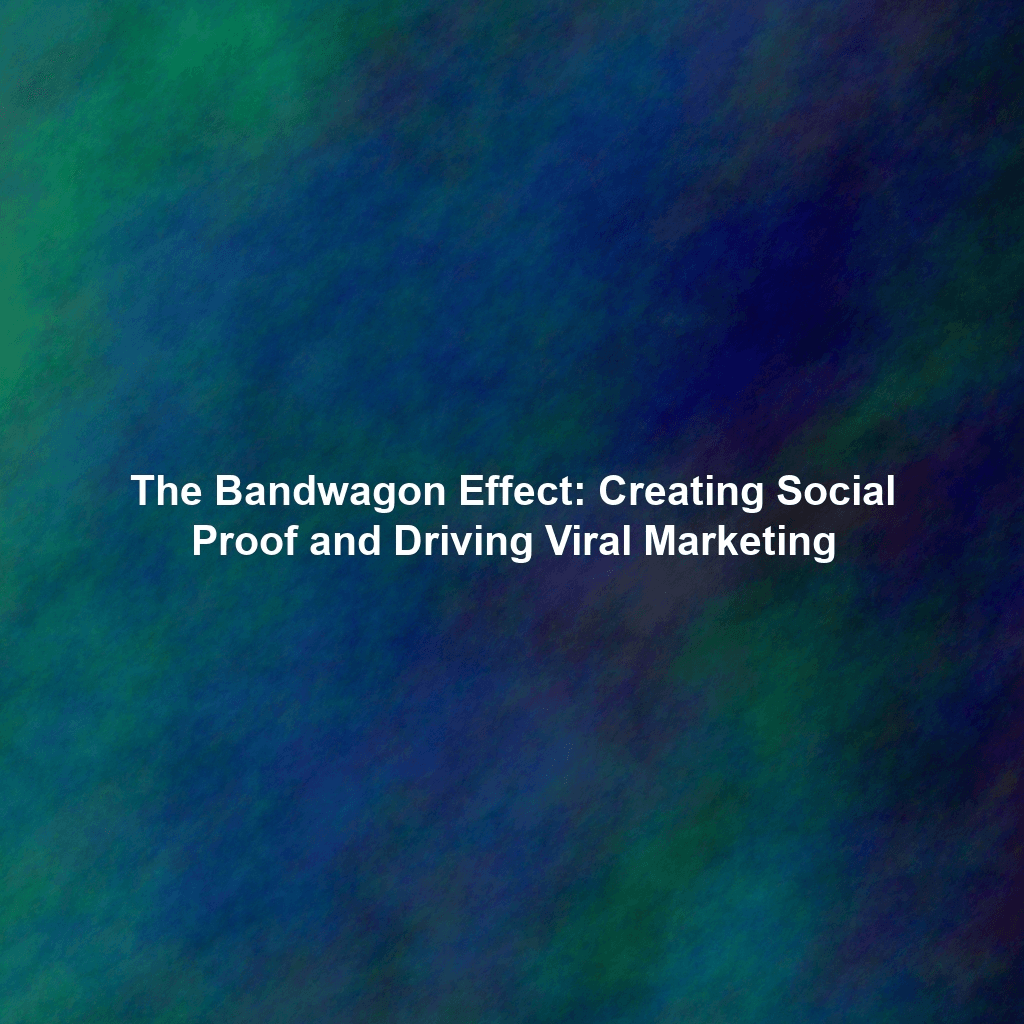Ever wondered why that new restaurant always has a line out the door, or why a particular product suddenly becomes the “it” thing? Chances are, the bandwagon effect is at play. This powerful cognitive bias significantly influences consumer behavior, making it a crucial concept for marketers to understand and ethically leverage. This article will explore the bandwagon effect, how to harness the power of social proof, and strategies for creating viral marketing campaigns that capitalize on this human tendency.
Understanding the Bandwagon Effect: Jumping on the Trend
At its core, the bandwagon effect is a psychological phenomenon where people adopt behaviors, styles, or attitudes simply because they see that others are doing the same. It’s the “follow the crowd” mentality. This bias stems from our innate desire to fit in, avoid being left out, and believe that popular choices are, by default, the right choices. We often assume that if many people are doing something, there must be a good reason for it.
Several factors contribute to the bandwagon effect:
- Social Conformity: The desire to be accepted by a group.
- Informational Influence: Believing that the choices of others provide information about what is good or correct.
- Fear of Missing Out (FOMO): The anxiety that one might miss out on a positive experience that others are having.
The Power of Social Proof: Building Credibility Through the Crowd
Social proof is the psychological principle that people are more likely to perform an action if they see that others are doing it. It’s the bedrock upon which the bandwagon effect thrives. By showcasing evidence that others are using and enjoying your product or service, you can build trust and encourage potential customers to join the “bandwagon.”
Types of Social Proof and How to Use Them
- Testimonials and Reviews: Genuine feedback from satisfied customers is incredibly powerful. Feature positive testimonials prominently on your website, product pages, and marketing materials. Encourage customers to leave reviews on platforms like Google, Yelp, and industry-specific review sites. Use tools to aggregate and display reviews dynamically.
- Case Studies: Detailed accounts of how your product or service has helped specific customers achieve tangible results. Case studies provide in-depth social proof, demonstrating the value and effectiveness of your offering. Focus on quantifiable results and include compelling visuals.
- Endorsements: Leveraging the credibility and influence of experts or celebrities to promote your product. Ensure that the endorsement is genuine and aligns with your brand values. Clearly disclose any sponsored content.
- Social Media Mentions: User-generated content (UGC) on social media is a goldmine of social proof. Encourage customers to share their experiences with your product using a branded hashtag. Repost and amplify positive mentions to showcase real-world usage.
- “Wisdom of the Crowd”: Highlighting metrics like the number of customers, downloads, or sales. For example, phrases like “Over 1 Million Users Worldwide” or “Best-Selling Product” can be highly effective.
- Certifications and Awards: Displaying recognized certifications and awards builds trust and authority, signaling that your product or service meets industry standards.
Creating Viral Marketing Campaigns: Riding the Bandwagon to Widespread Adoption
Viral marketing campaigns are designed to spread rapidly from person to person, often through online platforms. By strategically tapping into the bandwagon effect, you can create campaigns that achieve exponential reach and drive widespread adoption.
Strategies for Viral Marketing Success
- Create Shareable Content: Develop content that is entertaining, informative, or emotionally resonant, making people want to share it with their friends and followers. Videos, infographics, and interactive content are often highly shareable.
- Leverage User-Generated Content: Encourage users to create and share content related to your brand. Run contests or challenges that incentivize participation.
- Tap into Existing Trends: Identify trending topics, hashtags, or memes and incorporate them into your marketing campaign in a relevant and authentic way. Be mindful of cultural sensitivity and avoid forcing connections that feel unnatural.
- Gamification: Incorporate game-like elements, such as points, badges, and leaderboards, to encourage participation and create a sense of competition.
- Emotional Appeal: Craft content that evokes strong emotions, such as joy, surprise, or even outrage (used cautiously and ethically). Emotional content is more likely to be shared.
- Influencer Marketing: Partner with influencers who have a large and engaged following in your target market. Authentic endorsements from trusted influencers can significantly boost your campaign’s reach.
- Make it Easy to Share: Ensure that your content is easily shareable across various social media platforms. Include social sharing buttons and pre-populated messages.
- Monitor and Adapt: Closely monitor the performance of your campaign and be prepared to adapt your strategy based on the results. Track key metrics like shares, likes, and comments.
Ethical Considerations
While the bandwagon effect is a powerful tool, it’s essential to use it ethically. Avoid artificially inflating numbers or creating false social proof. Authenticity and transparency are crucial for building long-term trust with your audience. Misleading or deceptive practices can damage your brand reputation and erode customer confidence.
Conclusion
The bandwagon effect is a fundamental aspect of human psychology that marketers can leverage to drive adoption and build brand credibility. By understanding this bias and strategically incorporating social proof into your marketing efforts, you can create a powerful influence on potential customers, encouraging them to join the crowd and experience the benefits of your product or service. Remember to prioritize authenticity and ethical practices to build lasting relationships with your audience and avoid the pitfalls of manipulative marketing.
 Skip to content
Skip to content

